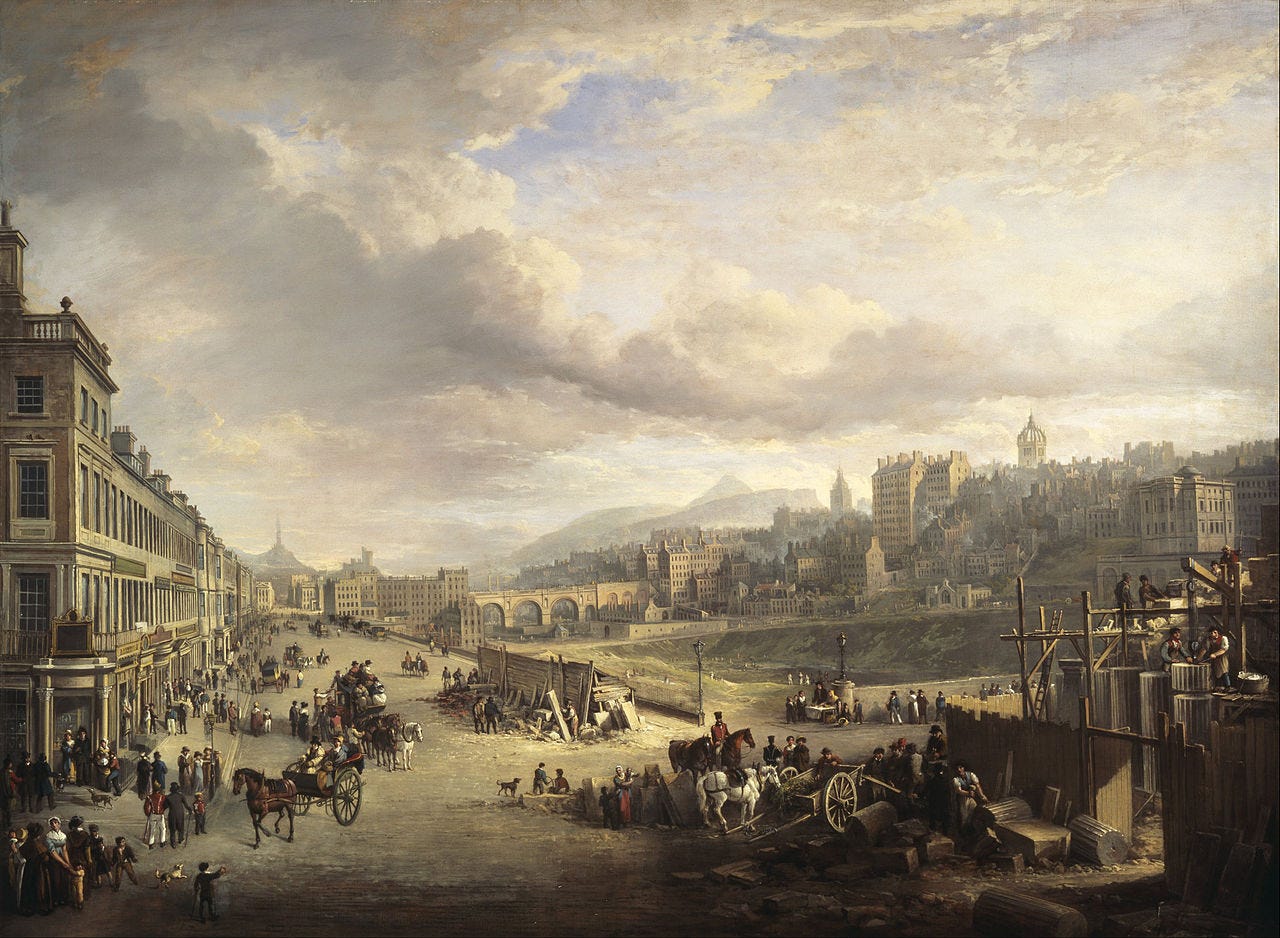Welcome to Cosmographia — a newsletter dedicated to exploring the world and our place in it. The following is part of our Atlas’ Notes series, featuring art, poetry, literature, cartography, and photography, all centred on a particular place. For the full map of Cosmographia posts, see here.
Amie and I officially became residents of Edinburgh this week, which we’re very excited about. As part of the move there’s been much dashing to and fro and little time for writing, so I’ll hope you’ll forgive me dipping into the archives for our paid post this week. It seems only fitting that it should be this one — enjoy!
Edina. Auld Reekie. Athens of the North. The Scottish capital has enjoyed many sobriquets over the centuries.
Edinburgh’s English name comes from the Old Britonnic Din Ediyn,1 which probably means something like fort or stronghold of Ediyn — who could have been an individual, or may relate to the rock-face on which the city’s mediaeval castle sits today.
The city’s many names reflect her many faces. She is at once regal, medieval, gothic, yet also wet, tempestuous, and, at times, gloomy. Once a hub of Enlightenment thinking, Edina remains philosophical in her Greek airs, while her besmirched walls belie her role as one of the key intellectual engines behind the Industrial Revolution. As Robert Louis Stevenson noted, she feels simultaneously a modern city and a country town; Arthur’s looming Seat, the wide grey expanse of the North Sea, the whipping winds — all give the feeling that, even while walking the city streets, nature’s wildness is never far away.
Sir Walter Scott put it best when he called her, “yon Empress of the North”.
I. In Art

Alexander Nasmyth was a Scottish artist known for both portraits and landscapes. Trained in London and Italy, he spent the early part of his career working on portrait commissions he received from the Scottish aristocracy. During this time, he befriended Robert Burns and painted a famous portrait of the young poet that now hangs in the Scottish National Gallery. Over time, Nasmyth’s strong Liberal opinions offended many of his aristocratic patrons and his commissions began to dwindle. This was fortuitous for art history as this led Nasmyth to landscape painting instead, where he reached his greatest heights.
To my mind, no one has painted Edinburgh better than Alexander Nasmyth. I would go far as to say he’s painted all five of the best five landscapes of the Scottish capital, so we are spoilt for choice. In the painting above, Nasmyth depicts a scene within the city, looking down Princes Street with the New Town (only 50 years old at the time of painting) on the left-hand side, and the Old Town on the right rising above the newly built Princes Street Gardens. In the painting below, Nasmyth shows the city from a distance, with Castle Rock dwarfed by Arthur’s Seat behind.
II. In Verse
Edina! Scotia's darling seat! All hail thy palaces and tow'rs, Where once, beneath a Monarch's feet, Sat Legislation's sov'reign pow'rs: From marking wildly scatt'red flow'rs, As on the banks of Ayr I stray'd, And singing, lone, the lingering hours, I shelter in they honour'd shade. ... Here Wealth still swells the golden tide, As busy Trade his labours plies; There Architecture's noble pride Bids elegance and splendour rise: Here Justice, from her native skies, High wields her balance and her rod; There Learning, with his eagle eyes, Seeks Science in her coy abode. ... There, watching high the least alarms, Thy rough, rude fortress gleams afar; Like some bold veteran, grey in arms, And mark'd with many a seamy scar: The pond'rous wall and massy bar, Grim-rising o'er the rugged rock, Have oft withstood assailing war, And oft repell'd th' invader's shock.— Robert Burns, excerpts from Address to Edinburgh (1786)
Robert Burns almost needs no introduction. Rabbie, as he’s affectionately known, is the national poet of Scotland and one of the finest poets to have ever lived. A Romantic pioneer, he wrote in both the Scots language and what is known as a “light Scots dialect” of English. Every year on this day (25th January), he is celebrated in Scotland and around the world in Burns Night celebrations. In 2009, Rabbie edged out William Wallace in a public vote for the title of ‘Greatest Scot Who Ever Lived’.








